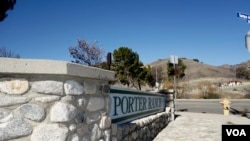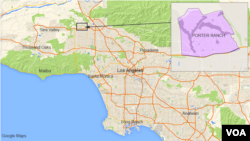The months-long natural gas leak that forced thousands of Los Angeles residents from their homes ranks as the largest known accidental methane release in U.S. history, equal to the annual greenhouse gas emissions of nearly 600,000 cars, scientists reported Thursday.
At its peak, 60 tons per hour of natural gas was spewing from a ruptured underground pipeline at the Aliso Canyon storage field, effectively doubling the methane emissions of the entire Los Angeles metropolitan area, the researchers said.
The stench of fumes from the site sickened scores of people and prompted the temporary relocation of more than 6,600 households from the northern Los Angeles community of Porter Ranch at the edge of the gas field.
From the time it was first detected on Oct. 23 until it was largely plugged earlier this month, the leak discharged a total of 97,100 tons — or 5 billion cubic feet (142 million cubic meters) — of methane to the atmosphere, according to the study, published in the journal Science.
The chief component of natural gas and a far more potent greenhouse agent than carbon dioxide, methane persists in the atmosphere for 10 years. The total release from Aliso Canyon is equivalent to the annual energy-sector methane emissions of a medium-sized European Union country, the study said.
"Our finding means that the Aliso Canyon leak was the largest accidental release of methane in the history of the U.S.," Tom Ryerson, a scientist for the National Oceanic and Atmospheric Administration (NOAA), and co-lead of the study, said in a NOAA statement about the research.
Comparisons
The 2004 collapse of an underground gas storage facility in Texas actually expelled more natural gas, but it was mostly consumed in an explosion and fire, so the methane never reached the atmosphere, the study said.
"Aliso Canyon will have by far the largest climate impact" and will "substantially impact the state of California greenhouse gas emission targets for the year," the study said.
In terms of its heat-trapping greenhouse potential, the volume of leaked methane was equivalent to putting 572,000 passenger cars on the road for a year, according to the scientists.
The Aliso Canyon facility, owned by Southern California Gas, a division of San Diego-based Sempra Energy, is the fourth largest gas storage field of its kind in the United States. The volume of methane that escaped represents just 3 percent of its total storage capacity, the study said.












